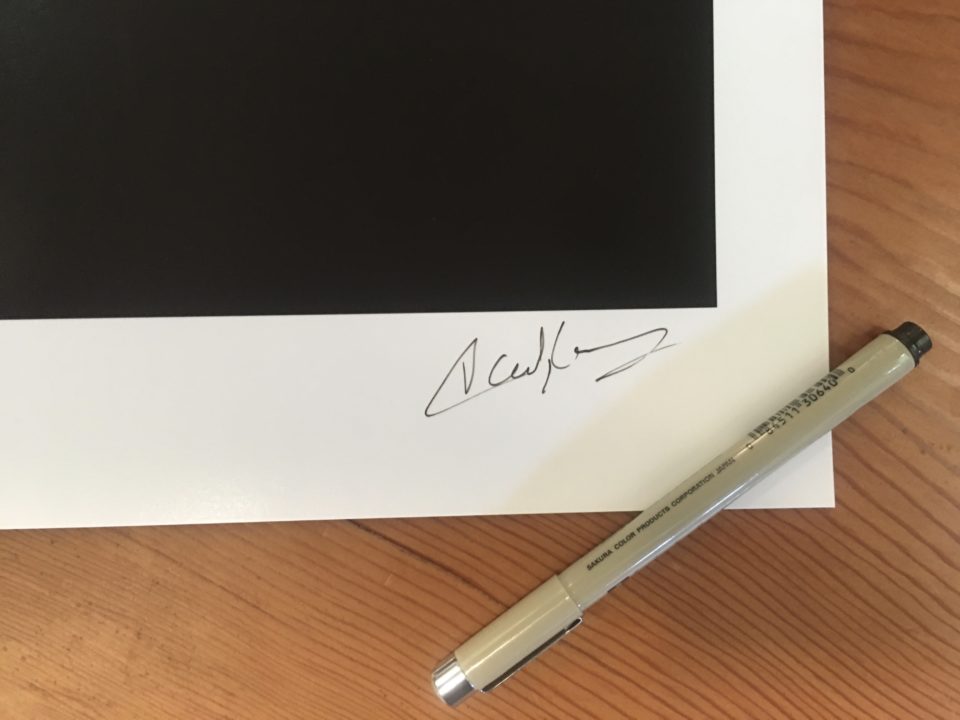
It is important to sign your prints, whether you print them yourself or have someone else do it for you. Most buyers will expect that the print includes a signature somewhere on the image at the time of purchase.
I also think it is important to sign your prints as a part of the statement that you are satisfied with the work you have done and consider the work, at least at this point in time, complete. Much like signing a contract, you are telling yourself that you agree with the terms and conditions of your printing.
As for where to sign your images, that is a personal choice. There are some “standard” conventions if a standard is even a thing in art, but I would say most signatures are in the lower right-hand corner of the paper. I personally don’t sign inside the image. For my printing style and aesthetic, I like to have my signature not interrupt the frame or content of the photograph, so I sign on the edge of the frame in the extra white space. If the print is borderless, I will sign the back of the image.
Your signature should be consistent from image to image, and it takes practice to get used to signing prints. Since you will be using both pens and pencils, it is worth practicing with both to get that signature down before you start to sign the final prints.
For signing matte or watercolor papers, I use a pencil. For other paper types, the pencil won’t properly adhere to the surface, so you need to use ink. I currently like to use the Sakura Micron pigment-based pens from Pigma. These pens are both permanent and archival. Not all pens are archival. Permanent doesn’t always mean archival. Since I have gone through all the trouble of making an archival print, I want to make sure that the signature is archival. I also make sure that I select a pen that won’t bleed through the paper.
Like I said earlier, the most commonplace to sign a print is on the lower left or right corners of the front of print in the margin area (en recto); however, you can sign the back of the print (en verso) if you prefer. If you are doing a limited or numbered print series, it is common to note the number of times the print edition number in the lower-left corner. If they are limited editions, that particular print appears above the number of prints in the edition.
I also find it important to share creation and meta-information about the print. For most prints, this information includes the print date, image date, paper, printer, ink set from the printer, and other considerations for the print collector. This can help if the print needs to be reprinted in the future or restored due to damage. I include this on a letter of sale or on the back of the image on the frame backing paper if you frame the print.
I hope that you might consider signing your prints when you make them, or at least the final prints. You might be surprised at how your relationship to the print changes when you put your name on it.
